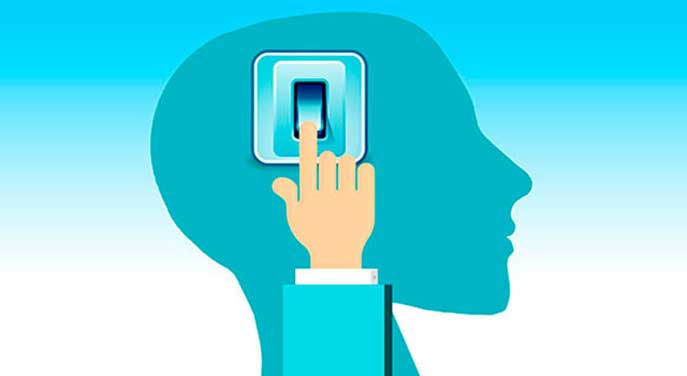University of Alberta researchers have discovered a potential biomarker – the response of a particular reflex in the body dubbed the Hoffmann reflex – that would help surgeons deliver deep brain stimulation (DBS) more precisely and effectively to patients with advanced Parkinson’s disease.
The work, led by U of A neurosurgeon Tejas Sankar, was recently published in the journal Brain Stimulation. DBS involves implanting electrodes into the brain and connecting them to a pacemaker-like device in the chest wall. These electrodes can then be programmed to deliver high-frequency stimulation that improves the symptoms of Parkinson’s disease.
Sankar, an associate professor of surgery in the Faculty of Medicine & Dentistry and member of the Neuroscience and Mental Health Institute, is the only neurosurgeon in Edmonton doing the procedure, which can tremendously improve the quality of life for individuals with advanced Parkinson’s. It’s painstaking work, due to the challenges involved in placement of the electrodes.
“The wires we implant into the brain are very small, and it takes the better part of several hours with an awake patient in the operating room to place these electrodes exactly where they need to go,” said Sankar. The surgical team confirms that the placement is correct through a variety of checks, including imaging, recording neurophysiological signals and testing the patient with stimulation while they are on the table, to see whether symptoms such as tremors are reduced.
While ultimately effective, the latter method of testing isn’t ideal, Sankar noted.
“It’s a subjective process and it’s very tiring to the patients and to the team as it takes many, many hours,” he said. “There’s been a long-standing goal in deep brain stimulation surgery to try to find some kind of biomarker that during surgery will tell you you’ve placed the electrode exactly where it should be to get the best result.”
In the Hoffmann reflex – a test doctors use to examine the reflexes of the upper extremities – Sankar and his team have found a promising candidate for the long-sought-after biomarker. He was inspired by a collaboration he had with the late neuroscientist Richard Stein, who studied spinal reflexes including the Hoffmann, which has been used for decades to assess neurological functions for various conditions. The reflex is very easily provoked, can be studied in different muscles and doesn’t require patient participation, making it an ideal candidate for use during deep brain stimulation surgery.
Sankar said the Hoffmann reflex is similar to the familiar knee reflex test, where tapping a tendon in the knee causes other muscles in the leg to contract and the leg to kick in response. The Hoffmann reflex produces a characteristic reaction in most people, but it is altered in those with Parkinson’s. Sankar and his team verified that the electrode placement identified through the Hoffmann reflex test mirrored the placement verified through the existing system of checks and tests.
Verifying the optimal electrode placement is an ongoing challenge with deep brain stimulation surgery, with suboptimal placement occurring in up to 17 per cent of cases. A biomarker that could potentially guarantee precise placement would help to minimize potential stimulation-related side-effects and deliver the greatest possible benefit to patients.
“The real estate is really valuable in the brain, so if we deliver the electrode to exactly the right spot and we turn on the stimulation and keep it confined to that spot, (patients) can have dramatic benefits to their symptoms of Parkinson’s,” said Sankar.
Collaborators on Sankar’s team include Jennifer Andrews, a post-doctoral fellow who did much of the experimental work examining the reflex, and Francois Roy, a clinical neurophysiologist who is Sankar’s co-investigator on a Kaye Fund Grant.
The team is also examining whether the same reflex can be used to guide the programming of electrical stimulations after surgery. Another collaborator, NMHI member and neurologist Fang Ba, meets with patients over several months following deep brain stimulation surgery, selecting various stimulation parameters and trying to optimize the control of various Parkinson’s symptoms. The Hoffmann reflex could make this post-surgical process more efficient as well.
Next steps involve looking at what happens to the Hoffmann reflex when a patient is under general anesthesia to determine whether the surgery could be done under those parameters, and delving further into the ways it can be used after surgery.
According to Sankar, the biomarker could be used to track the progression of Parkinson’s, and to look for other reflexes that may perform as well as the Hoffmann reflex, if not better.
| By Adrianna MacPherson for © Troy Media
The views, opinions and positions expressed by columnists and contributors are the author’s alone. They do not inherently or expressly reflect the views, opinions and/or positions of our publication.


